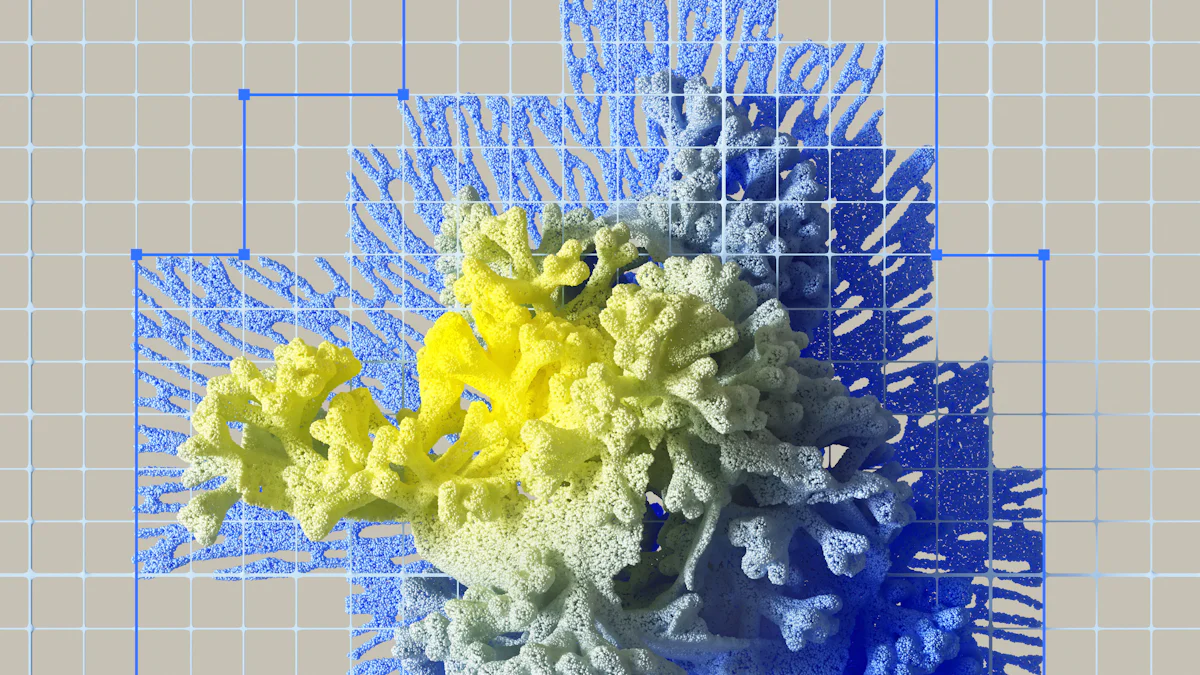Tools for Measuring and Mitigating AI Bias

AI bias occurs when algorithms produce prejudiced results due to errors or oversights in the machine learning process. This bias often stems from human and systemic biases embedded in the data used to train AI systems. Addressing AI bias is crucial for ensuring fairness, accuracy, and inclusivity in decision-making processes. AI can influence critical areas such as hiring, lending, and criminal justice. Therefore, measuring AI bias becomes essential to identify and mitigate these biases effectively. Various tools and methods have been developed to detect and reduce bias, promoting equitable outcomes in AI-driven solutions.
Understanding AI Bias
Definition and Types of AI Bias
AI bias refers to the systematic and unfair treatment of individuals or groups by artificial intelligence systems. This bias can manifest in various forms, each with distinct characteristics and implications.
Algorithmic Bias
Algorithmic bias arises from the design and implementation of AI algorithms. When developers create algorithms, they may inadvertently embed their own biases or assumptions into the system. This can lead to skewed outcomes that favor certain groups over others. For instance, if an algorithm is designed to prioritize efficiency over fairness, it might disproportionately impact marginalized communities.
Data Bias
Data bias occurs when the data used to train AI models is not representative of the broader population. If the training data contains historical prejudices or lacks diversity, the AI system will likely replicate these biases in its predictions. For example, an AI model trained on biased hiring data may continue to favor certain demographics, perpetuating discriminatory practices.
Societal Bias
Societal bias reflects the broader social and cultural prejudices that exist within a community. AI systems, when trained on data reflecting societal norms, can inadvertently reinforce these biases. This can result in AI-driven decisions that mirror existing inequalities, such as racial or gender disparities in areas like criminal justice or lending.
Impact of AI Bias
The presence of bias in AI systems can have far-reaching consequences, affecting individuals, communities, and society as a whole.
Ethical Implications
AI bias poses significant ethical challenges. Biased algorithms can lead to unfair treatment and discrimination, undermining the principles of justice and equality. For instance, biased AI systems in hiring processes can result in qualified candidates being overlooked due to their race or gender. Addressing these ethical concerns is crucial to ensure that AI technologies are used responsibly and equitably.
Economic Consequences
The economic impact of AI bias can be profound. Biased AI systems can lead to inefficient resource allocation, resulting in financial losses for businesses and individuals. For example, biased credit scoring algorithms may deny loans to deserving applicants, hindering economic growth and perpetuating financial disparities. Ensuring fairness in AI systems can help promote economic inclusivity and prosperity.
Social Ramifications
The social ramifications of AI bias are equally concerning. Biased AI systems can exacerbate existing social inequalities, leading to further marginalization of vulnerable groups. For instance, biased facial recognition technology can result in wrongful arrests or surveillance of minority communities. Addressing these social implications is essential to foster trust and acceptance of AI technologies in society.
Measuring AI Bias

Understanding and addressing AI bias requires effective tools and techniques. These tools help identify and quantify biases in AI systems, ensuring fair and equitable outcomes.
Tools for Bias Detection
Detecting bias in AI systems involves using specialized tools that analyze data and algorithms. These tools provide insights into potential biases, allowing developers to take corrective actions.
Fairness Indicators
Fairness indicators serve as essential tools for measuring AI bias. They evaluate how AI models treat different groups, ensuring equitable outcomes. AWS AI Service Cards offer transparency and explainability by providing insights into data and models. They help identify and limit bias, increasing transparency in AI systems. By using fairness indicators, developers can assess whether their models treat all groups fairly.
Bias Auditing Tools
Bias auditing tools play a crucial role in identifying and mitigating bias in AI systems. Algorithm Audit's Bias Detection Tool uses statistical methods to spot unfair treatment of groups by AI algorithms. It combines quantitative and qualitative methods to make decisions about fair AI. Similarly, the FairNow AI Bias Assessment Tool analyzes AI models and data to identify hidden biases. These tools help developers scrutinize data quality, model behavior, and decision patterns, ensuring unbiased AI systems.
Techniques for Quantifying Bias
Quantifying bias involves using specific techniques to measure the extent of bias in AI systems. These techniques provide a numerical representation of bias, aiding in its mitigation.
Statistical Measures
Statistical measures are vital for quantifying bias in AI systems. They provide a mathematical approach to assess bias levels. The Algorithmic Bias Detection Tool employs statistical methods to identify when groups face unfair treatment by algorithms. By using these measures, developers can quantify bias and take steps to correct it.
Performance Metrics
Performance metrics evaluate how well AI models perform across different groups. They help identify disparities in model performance, indicating potential biases. MIDRC Bias Awareness Tool emphasizes diverse data collection and curation strategies to mitigate bias in medical image analysis. By using performance metrics, developers can ensure that AI models deliver trustworthy results for all groups.
Mitigating AI Bias

Mitigating AI bias involves implementing strategies to reduce or eliminate bias in AI systems. These strategies can be categorized into pre-processing, in-processing, and post-processing techniques. Each approach plays a crucial role in ensuring fairness and equity in AI outcomes.
Pre-processing Techniques
Pre-processing techniques focus on preparing the data before it is used to train AI models. These methods aim to eliminate biases present in the data itself.
Data Cleaning
Data cleaning involves identifying and removing biased or irrelevant data points from the dataset. By ensuring that the training data is free from prejudices, developers can prevent biased outcomes. For example, if a dataset contains historical hiring data that favors certain demographics, data cleaning can help remove these biases, leading to fairer AI-driven hiring decisions.
Data Augmentation
Data augmentation enhances the diversity of the training dataset by adding new, unbiased data points. This technique helps create a more representative dataset, reducing the likelihood of biased predictions. For instance, in image recognition tasks, augmenting the dataset with images from diverse backgrounds can improve the model's ability to recognize features across different demographics.
In-processing Techniques
In-processing techniques involve modifying the AI algorithms during the training phase to reduce bias. These methods ensure that the model learns to make fair decisions.
Algorithmic Adjustments
Algorithmic adjustments involve altering the learning process of AI models to minimize bias. Developers can implement changes in the algorithm's structure or parameters to promote fairness. For example, adjusting the weight of certain features can prevent the model from overemphasizing biased data points, leading to more equitable outcomes.
Fairness Constraints
Fairness constraints impose specific rules or conditions on the AI model to ensure fair treatment of all groups. These constraints guide the model to make unbiased decisions, even if the training data contains biases. For instance, in a lending application, fairness constraints can ensure that the model does not discriminate against applicants based on race or gender.
Post-processing Techniques
Post-processing techniques focus on adjusting the outputs of AI models to correct any biases that may have occurred during the decision-making process.
Output Adjustments
Output adjustments involve modifying the results produced by AI models to ensure fairness. Developers can apply corrections to the model's predictions to eliminate biased outcomes. For example, in a facial recognition system, output adjustments can help ensure that the model accurately identifies individuals from all demographic groups.
Bias Correction
Bias correction involves analyzing the model's outputs and making necessary changes to address any detected biases. This technique ensures that the final decisions made by the AI system are fair and unbiased. For instance, in an AI hiring system, bias correction can help identify and rectify any discriminatory patterns in candidate selection.
"The Risk of Proxy Discrimination in AI Hiring Systems" highlights the importance of comprehensive auditing and testing to identify and mitigate proxy discrimination issues. By implementing these mitigation techniques, developers can ensure that AI systems operate fairly and justly, promoting equitable outcomes across various applications.
Ongoing Monitoring and Evaluation
Ensuring fairness in AI systems requires continuous monitoring and evaluation. This process helps maintain unbiased outcomes and adapts to new data and societal changes.
Continuous Bias Monitoring
Continuous bias monitoring involves regularly checking AI systems for potential biases. This proactive approach ensures that AI models remain fair and equitable over time.
Real-time Analysis
Real-time analysis allows developers to detect biases as they occur. By analyzing data and model outputs continuously, they can identify and address biases promptly. This method helps prevent biased decisions from affecting individuals or groups. For instance, in high-stakes testing environments, real-time analysis can ensure that test results remain fair and unbiased for all candidates.
Feedback Loops
Feedback loops provide valuable insights into AI system performance. By collecting feedback from users and stakeholders, developers can identify areas where biases may arise. This information helps refine AI models and improve their fairness. Feedback loops also foster transparency and trust, as users see their concerns addressed in the system's development.
Evaluation Frameworks
Evaluation frameworks offer structured approaches to assess AI systems for bias. These frameworks guide developers in conducting thorough evaluations and implementing necessary improvements.
Regular Audits
Regular audits involve systematic reviews of AI systems to identify biases. These audits assess data quality, model behavior, and decision patterns. By conducting regular audits, developers can ensure that AI systems remain unbiased and aligned with ethical guidelines. Organizations implementing bias mitigation strategies often use audits to evaluate their outcomes and make informed adjustments.
Impact Assessments
Impact assessments evaluate the effects of AI systems on individuals and communities. These assessments consider ethical, social, and economic implications of AI decisions. By conducting impact assessments, developers can understand how AI systems affect different groups and make necessary changes to promote fairness. Ethical guidelines and frameworks often emphasize the importance of impact assessments in mitigating bias in AI systems.
"Ethical guidelines and frameworks" highlight the need for ongoing monitoring and evaluation to ensure AI systems operate fairly and justly. By implementing these practices, developers can maintain unbiased AI systems and promote equitable outcomes across various applications.
This blog explored the critical issue of AI bias, highlighting its types, impacts, and the tools available for measurement and mitigation. Addressing AI bias is not just a technical challenge but an ethical imperative. Organizations must commit to continuous bias mitigation efforts, ensuring AI systems promote fairness and inclusivity. Stakeholders should collaborate to establish ethical guidelines and frameworks, fostering responsible AI deployment. Readers are encouraged to delve deeper into available resources and tools, staying informed and proactive in the fight against AI bias.
See Also
Is It Possible to Train AI Without Bias?
Examples of AI Reflecting Societal Biases
